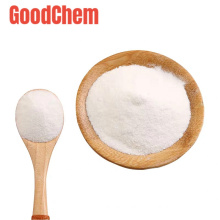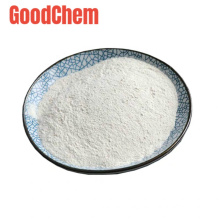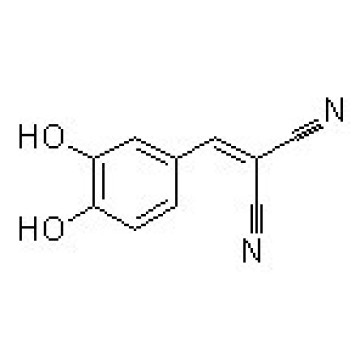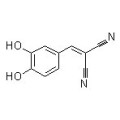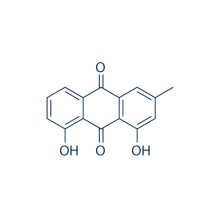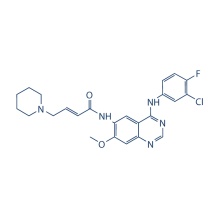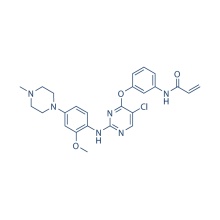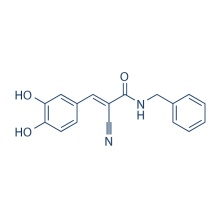.cp_wz table {border-top: 1px solid #ccc; border-left: 1px solid #ccc; } .cp_wz table td {border-right: 1px solid #ccc; borda inferior: 1px sólido #ccc; preenchimento: 5px 0px 0px 5px;} .cp_wz tabela th {border-right: 1px solid #ccc; border-bottom: 1px solid #ccc; preenchimento: 5px 0px 0px 5px;} \ n Peso molecular: \ n 186,17 AG-18 inibe EGFR com IC50 de 35 μM. \ n Atividade biológica AG 18 inibe EGFR e IR com Ki de 11 μM e 12 mM. AG 18 inibe a autofosforilação de EGFR induzida por EGF com IC50 de 15 μM em células A431. AG 18 (10 μM) inibe a proliferação induzida por EGF de células GH3. AG 18 (10 μM) causa inibição significativa da proliferação celular induzida por 10 nM e 1 μM de grelina. AG 18 (10 μM) bloqueia o aumento estimulado pela grelina na fosforilação ERK 1/2 em células GH3. AG 18 inibe a liberação sensível ao volume de [3H] taurina em culturas primárias de astrócitos de uma maneira dependente da dose. AG 18 ativa a liberação de D- [3H] aspartato dependente do volume induzida pelo inchaço a partir de culturas astrocíticas primárias. AG 18 (300 μM) inibe a estimulação induzida por TPA da expressão de ICAM-1 de uma maneira dependente da dose em células epiteliais A549. AG 18 (300 μM) também inibe a ligação da proteína de DNA NF-kappaB estimulada por TPA e a atividade do promotor ICAM-1 em células epiteliais A549. AG 18 (300 μM) inibe a ligação da proteína de DNA NF-kappaB induzida por TNF-alfa e a atividade do promotor ICAM-1 de uma maneira dependente da dose em células epiteliais A549. A atividade de IKK é estimulada por TNF-alfa e TPA, e esses efeitos são inibidos por AG 18 (100 μM) em células epiteliais A549. AG 18 (10 μM) diminui a potência de 5-HT em 4 vezes e reduz a contração máxima para 5-HT na artéria carótida. AG 18 (10 μM) muda a contração induzida por KCl em 2 vezes e causa o máximo de inibição significativa. Ensaio de cinase de protocolo (apenas para referência): [1]
|
EGF-Receptor Autophosphorylation
|
WGA-purified EGF receptor from A431 cells (0.5 μg/assay) is activated with EGF (800 nM) for 20 min at 4 ℃. The reaction is initiated by the addition of Mg(Ac)2 (60 mM), Tris-Mes buffer, pH 7.6 (50 mM), and [32P]ATP (20 pM, 5 μCi/assay). The reaction is conducted at either 4 ℃ or 15 ℃ and terminated by addition of sodium dodecyl sulfate (SDS) sample buffer (10% glycerol, 50 mM Tris, pH 6.8, 5% β-mercaptoethanol, and 3% SDS). The samples are run on a 8% SDS polyacrylamide gel (SDS-PAGE) (prepared from 30% acrylamide and 0.8% bis-(acrylamide) and contained 0.375 M Tris, pH 8.8, 0.1% SDS, 0.05% TEMED, and 0.46% ammonium persulfate). The gel is dried and autoradiography is perfromed with Agfa Curix RP2 X-ray film. The relevant radioactive bands are cut and counted in the Cerenkov mode. The fast phase of autophosphorylation continued for another 10 min. The extent of phosphorylation completed in the first 10 s at 15 ℃ comprises 1/3 of the total autophosphorylation signal and probably reflects the phosphorylation of the first site on the receptor. The 10-s interval is therefore chosen for use in subsequent autophosphorylation experiments.
|
Ensaio de células: [1]
|
Cell lines
|
GH3 cells
|
|
Concentrations
|
10 μM
|
|
Incubation Time
|
0.5 hour
|
|
Method
|
GH3 cells are plated at 5 × 104 cells/well in media containing 2% charcoal-stripped FCS and various concentrations of ghrelin, desoctanoylated ghrelin and PMA or EGF for 72 hours with the addition of 2 μCi/well [3H]thymidine for a further 6 hours. A time-course of 24 hours, 48 hours and 72 hours is performed for ghrelin stimulation and 72 hours is selected for further experiments. Studies are also performed to investigate the effect of rat ghrelin or desoctanoyl ghrelin-induced proliferation and the effect of U0126, GF109203X, AG 18, wortmannin and H-89 upon ghrelin-induced MAPK stimulation. AG 18 at 10 μM is added 30 min before each treatment. Cells are harvested before counting in the presence of scintillation fluid using a Microbeta 1450 bcounter. Experiments are repeated at least three times.
|
Conversão de diferentes modelos de animais com base em BSA (valor com base em dados das diretrizes preliminares da FDA)
|
Species
|
Baboon
|
Dog
|
Monkey
|
Rabbit
|
Guinea pig
|
Rat
|
Hamster
|
Mouse
|
|
Weight (kg)
|
12
|
10
|
3
|
1.8
|
0.4
|
0.15
|
0.08
|
0.02
|
|
Body Surface Area (m2)
|
0.6
|
0.5
|
0.24
|
0.15
|
0.05
|
0.025
|
0.02
|
0.007
|
|
Km factor
|
20
|
20
|
12
|
12
|
8
|
6
|
5
|
3
|
|
Animal A (mg/kg) = Animal B (mg/kg) multiplied by
|
Animal B Km
|
|
Animal A Km
|
Por exemplo, para modificar a dose de resveratrol usada para um camundongo (22,4 mg / kg) para uma dose baseada na BSA para um rato, multiplique 22,4 mg / kg pelo fator Km para um camundongo e, em seguida, divida pelo fator Km para um rato. Este cálculo resulta em uma dose equivalente de rato para o resveratrol de 11,2 mg / kg.
|
Rat dose (mg/kg) = mouse dose (22.4 mg/kg) ×
|
mouse Km(3)
|
= 11.2 mg/kg
|
|
rat Km(6)
|
Informação Química
|
Molecular Weight (MW)
|
186.17
|
|
Formula
|
C10H6N2O2
|
|
CAS No.
|
118409-57-7
|
|
Storage
|
3 years -20℃Powder
|
|
6 months-80℃in solvent (DMSO, water, etc.)
|
|
Synonyms
|
RG-50810, Tyrphostin A23
|
|
Solubility (25°C) *
|
In vitro
|
DMSO
|
37 mg/mL
(198.74 mM)
|
|
Water
|
<1 mg/mL
(
|
|
Ethanol
|
37 mg/mL
(198.74 mM)
|
* <1 mg/ml means slightly soluble or insoluble.
* Please note that Selleck tests the solubility of all compounds in-house, and the actual solubility may differ slightly from published values. This is normal and is due to slight batch-to-batch variations.
|
|
Chemical Name
|
Propanedinitrile, 2-[(3,4-dihydroxyphenyl)methylene]-
|
Calculadora de molaridade Calculadora de diluição Calculadora de peso molecular
Grupo de Produto : Proteína Tirosina Quinase > Inibidor EGFR

